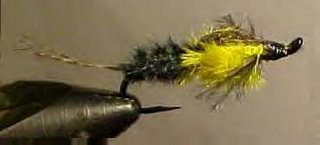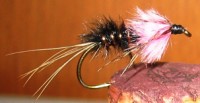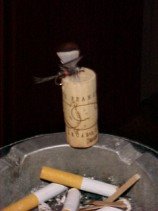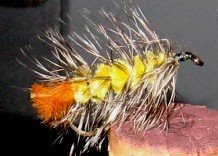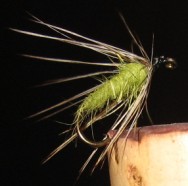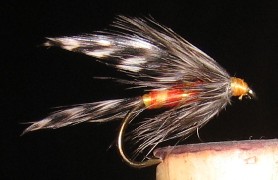.. They took pity on us and gifted us with the appropriate flies for the soon to be encountered "other fishing."
 |
| Yellow Belly Parachute |
.. Very, very soon now they will become fussy. They will eyeball your flies and not eat them. They will confuse the experts by eating anything but the stuff sold over the counter at the feather merchants' shops.
.. This fishy behavior will engender a tying frenzy by pros and amateurs alike. They will invent. They will innovate. They will create. There will be a new crop of latest and greatest flies. New materials will be incorporated into old flies. Old flies will be re-named and called something catchy - contemporary merchandising - dontchaknow.
 |
| Copper Nice-N-Easy |
.. They gently cruised the musty aisles. Aisles filled with bins of flies. Aisles decorated with cute gadgets and plastic packaging. Aisles surrounded by pink and chartreuse pastel shirts designed for the liberation of $100.00 or more.
.. And, then, (with eyes as sharp as the visiting ospreys,) they have decided what they should tie, (or modify, or copy.)
.. These kids are on the water every day. They see stuff. They remember stiff. They tie stuff. They fish the stuff. These are just scraps. They call the stuff "Bits O' Fluff."
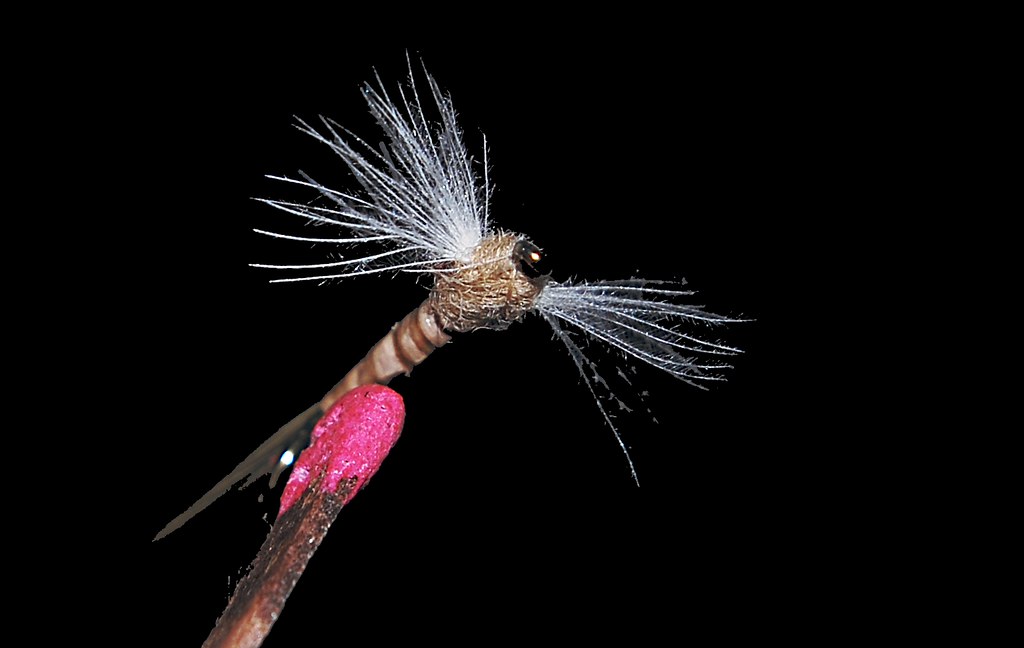 |
| Brown And Tan Flossy Spinner |
.. They crank out buckets of flies. On rare occasions there are even two or three flies that are the same. (or nearly so.)
.. Mostly the flies are quick to tie. Mostly they are devised from scraps and other readily available bits currently strewn across the tying bench, (or whatever.) Bless their hearts, they give us some. A dozen of each, more or less.
.. These flies are in no way standardized. They are often too small for us to understand. They infrequently have names. When they have names they are certainly not names that would entice most of the sophisticated technical fishers of the fly.
 |
| Loop Wing Cripple |
.. This time they did soil their shorts. The thought that some serious anglers might see the flies and actually use them made the kids roll on the floor holding their sides. They thrashed our miniscule living room to a froth.
.. Happily, not many serious or technical anglers read these posts. They are too busy avoiding catching by fishing the correct flies. The flies fished by the bejeweled and highly decorated, and heavily armored fishers have names that would make any advertising executive swoon.
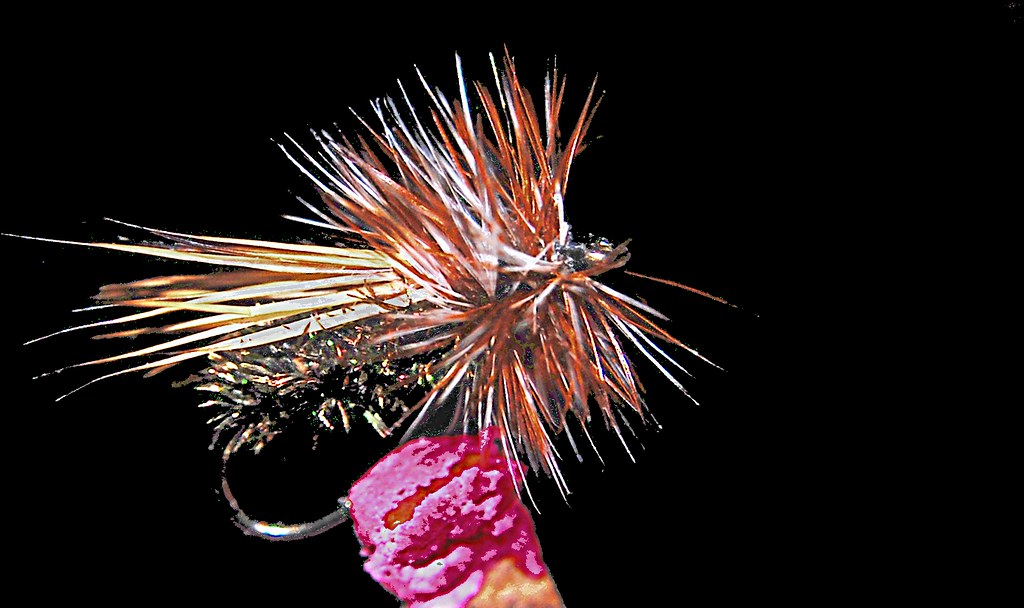 |
| Itty Bitty Caddis |
.. We can tell you that they, (or reasonable facsimiles thereof,) have been fished by the kids.
.. The kids have caught fish with all of them - BUT - they fish where most do not - AND - they do things unheard of in the guide books and expert publications.



